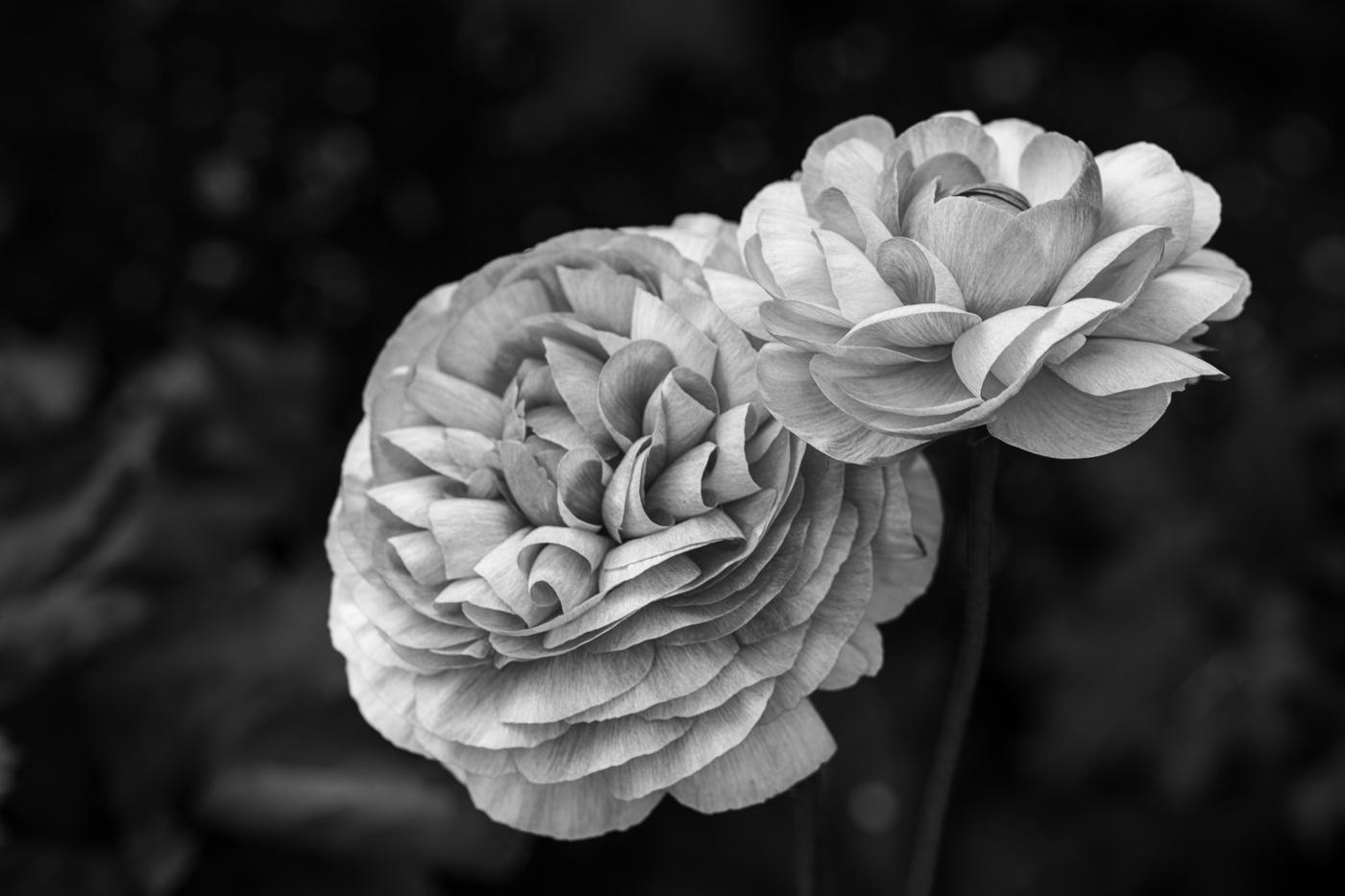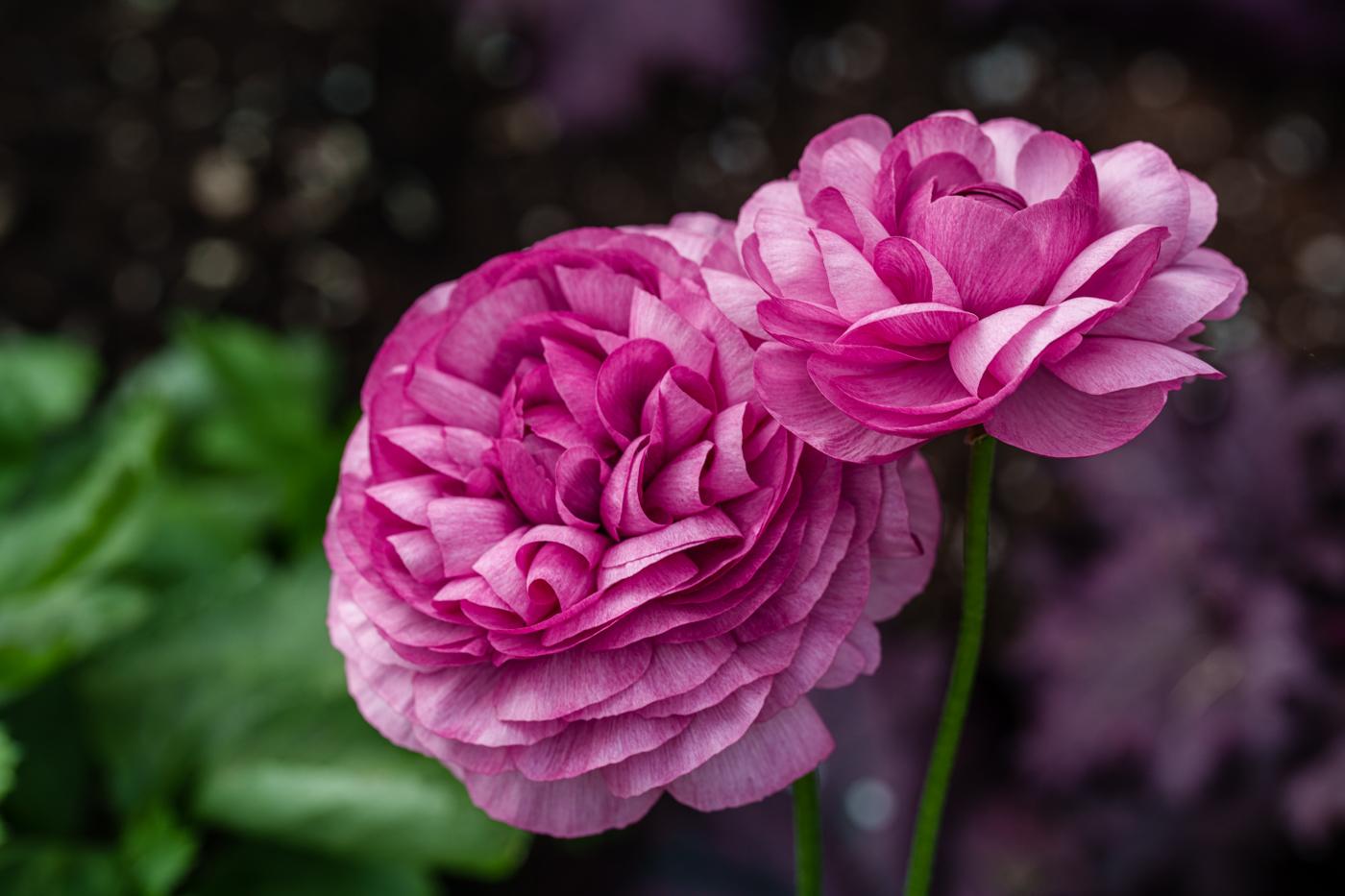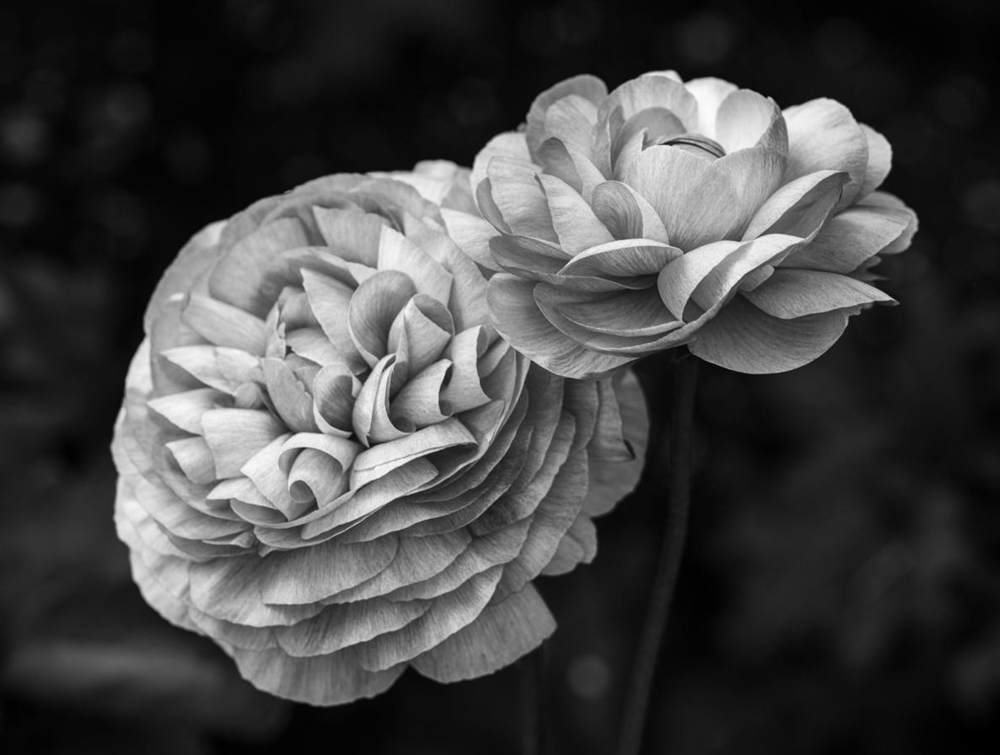LuAnn Thatcher
About the Image(s)
Finding the right flower to convert to black and white is challenging. I probably am simply struggling with "seeing" in B&W. I found this Ranunculus at my local Conservatory Spring Flower Show. The original flower was pink, my favorite color, which drew me to register this image on my camera. I love how the broad spectrum of tones, the blooms pop against the background, and the petals' details draw my eye into the photograph. The photo shows a sizeable full bloom and a young one still opening, like a mother/child relationship. I see this pairing breaking the rule of thirds. I left plenty of space around the subjects to hint at a garden location and show depth, then focused the golden spiral on the young bloom.
Camera: Sony A7RV, 70-200mm lens, f/8.0, 1/40s, ISO 125, focal length 200mm, aperture priority, -1 exposure compensation, no tripod.
I processed the photo in Lightroom CC. I have recently been using the Auto button in the Basic panel in LR and seem to get consistent results that I like. I used DxO software to convert to B&W and the Ilford Delta 3200 preset in the film Pack 6 preset for something different. I believe I also used Photoshop to darken the background a bit.
I look forward to your thoughts and comments!
This round’s discussion is now closed!
13 comments posted
(Group 43)
Your use of monochrome helps me appreciate the subtle texture of the petals and the intersecting shapes of the flowers. Besides, I love Ranunculus! Posted: 05/04/2023 18:57:09
I am glad you liked this photograph. I am learning a lot about shadows and light, and hopefully, one day, I can see in B&W more quickly when out in nature.
Have a wonderful day! Posted: 05/05/2023 08:11:47
(Group 43)
There is always something we can improve on and the journey is amazing; I hope it never ends!
lt Posted: 05/05/2023 12:54:24
One of the facets of rendering in BW to me is that you can control where you want the viewer to look by tone. I think your subject is perfect for BW
In the version I attached, I separated both blooms into a center area that I made lighter and the petals on the outside darker without being heavy handed. The lighter centers are where hopefully the eye goes first and the dark areas add definition to the petal edges. I also cropped to have even space between flower edges and the frame, just my bias.
Regards
Emil
Posted: 05/11/2023 14:35:22
I like your bias! I can see how your edit made a noticeable difference in where my eye goes now. I will keep this technique in mind for the next B&W flower. Thanks for the help!
lt Posted: 05/11/2023 15:50:00
Great job.
After Emil's editing, it got even better, I also thought about trimming, but I didn't think about lightening and darkening individual petals, thanks to Emil, he taught me something new.
All the best to you and your family.
Sincerely
Israel
Posted: 05/12/2023 10:07:07
Have a great day, my friend!
lt Posted: 05/17/2023 14:56:12
Concerning using B&W on the camera's LCD monitor... I've tried it but decided that it's best for me to learn to carefully observe the lines, shapes, and compositions and then utilize Photoshop tools to adjust the tones based on the colors in an image. I don't know if this approach would work in general, but I find that it gives me lots of light control.
Posted: 05/17/2023 12:45:57
Thanks for your thoughts and comments. Yes, I agree Emil has an eye for B&W editing and a style that fits what he is drawn towards. If I shoot in B&W, I have my camera set to RAW, so if I decide to go back to color, I can. Software nowadays is so flexible we can change our edits at the snap of a finger if it suits us.
Have a wonderful day, my friend!
lt Posted: 05/17/2023 14:52:02
(Groups 29 & 80)
Have a good day,
lt Posted: 05/23/2023 10:15:05


